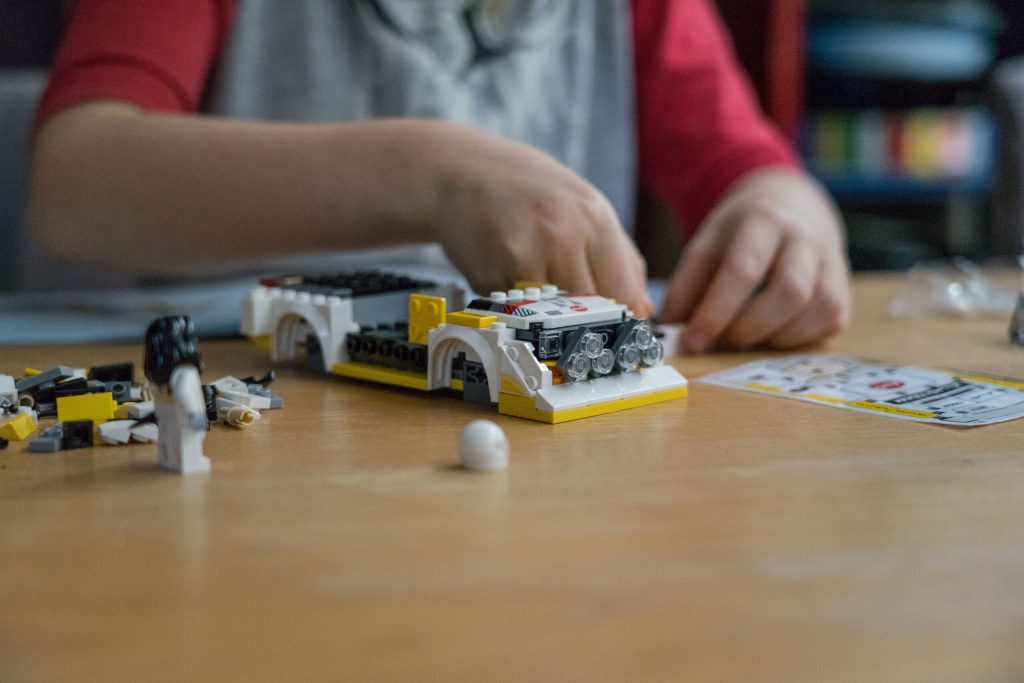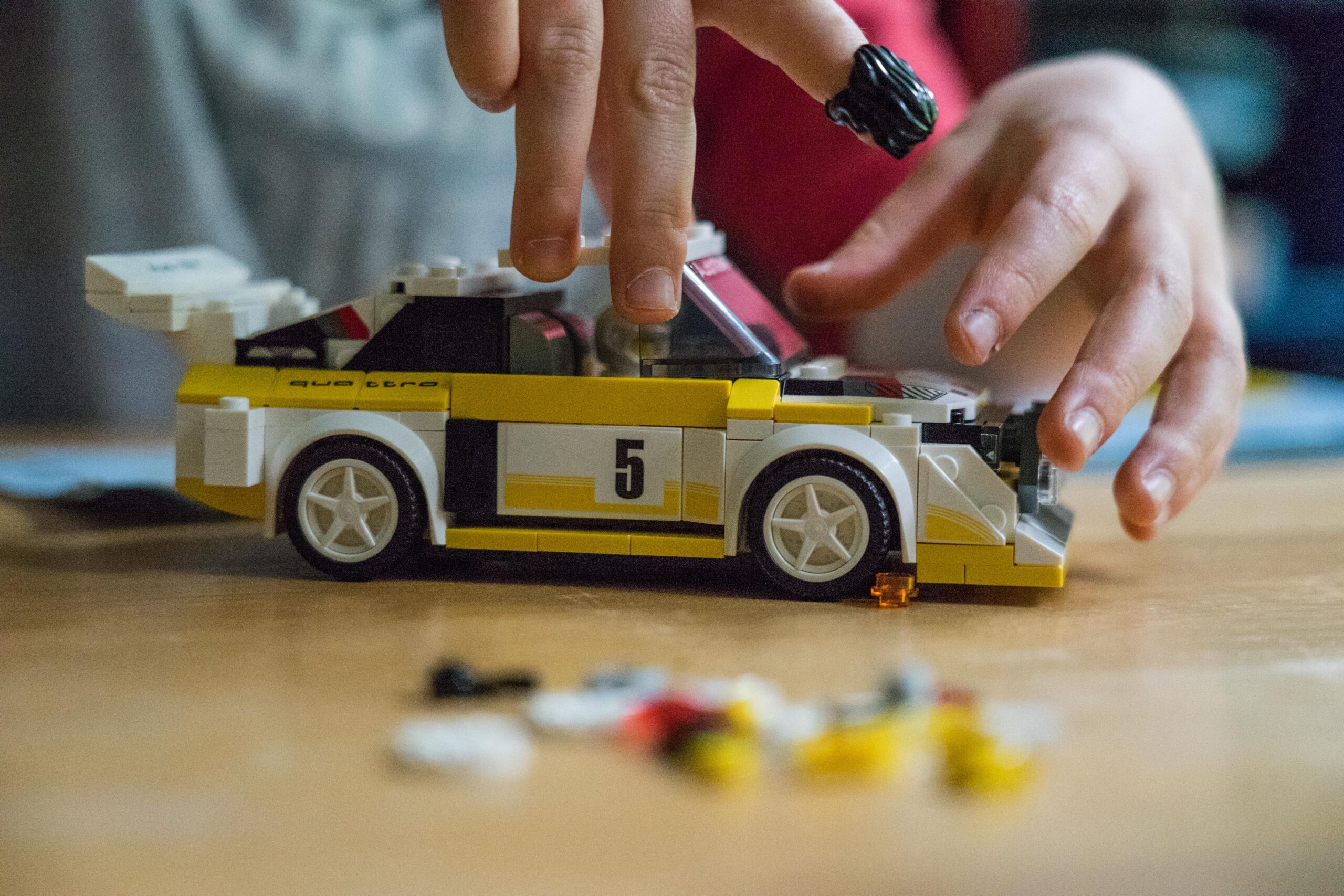Quick, what’s the biggest manufacturer of tyres in the world? If you said Michelin or BFGoodrich, then sound the wrong buzzer: The company that makes the most rubber circles is actually Danish toymaker Lego. Every year, some 300 million little black circles leave the company’s factories, headed for boxes of vehicle kits that kids and adults alike hope Santa will leave under the tree.
If you’ve been very good this year, then you might be hoping for something from Lego’s new tie-up with Formula 1. Choose your favourite hero between either a mustachioed Nigel Mansell minifig and his Williams Racing FW14B, or a tiny Senna and his McLaren MP4/4, complete with scale-sized yellow helmet. Or, for the kids, there are ten smaller sets that each feature an F1 car from the current grid.


If you’re more into the classics, then Lego’s got you covered there too, with build-it-yourself sets of the Land Rover Defender, Porsche 911 (switch between Turbo and Targa with a couple of parts), Corvette, Camaro, Countach, or even the Ecto-1 Cadillac ambulance from Ghostbusters. You can get an F40 for around 25 quid, or spend ten times that on a Mercedes G-Class with a functioning gearbox.
Even for grownups, there’s still something great about hearing that rattle of tiny bricks when you pick up a gift-wrapped box. It’s as good as—well, nearly as good as—opening the post box to see that the new car parts you’re waiting on have finally arrived. Here’s how Lego went from simple and blocky, to making deals with the pinnacle of motorsport.
Play Well
This particular holiday tale begins in Billund, Denmark, where a young carpenter is about to open his own workshop. A series of disasters would soon befall him. Ole Kirk Christiansen, a name so Danish it should come with one of those tins of biscuits, was born in 1891 into relative poverty, though he was able to get a basic education. As Denmark was neutral during WWI, he survived military service, trained as an apprentice carpenter with one of his brothers, and then established his own business making furniture and whatnot. Then his two young sons accidentally burned down the workshop and home.
Undeterred, Christiansen built a new workshop and home, larger this time, and continued his woodworking business. He seems to have been fairly skilled, and by the time the early 1930s rolled around, he employed a small workforce. Then the Great Depression hit, and shortly thereafter Christiansen’s wife died after giving birth to the family’s fourth child.

Out of this despair, Christiansen literally carved little pieces of joy and wonder. He began making wooden toys of particular craft and ingenuity, perhaps at first inspired by needing to keep his young children entertained, but then as a business. By 1934, he had mashed together the Danish words “leg” and “godt” – translated as “play” and “well” – to form Lego, and the brand name was born. Then Germany invaded Denmark and the workshop burned down again.

There’s a bit of similarity here in the story of early Matchbox, as Christiansen was also an early adopter of toymaking technology, at first stymied by postwar restrictions. Just as Matchbox co-founder John William Odel wasn’t allowed to sell zinc-based toys for a time, Christiansen’s purchase of the first plastic-injection machine in Denmark was held up because commercial usage of such a device was restricted by the Danish government. He kept experimenting, the rules eased off, and the first Lego bricks emerged in 1949.
Christiansen died in 1958, but not before seeing the first optimised Lego bricks that would make his company everlasting. Originally designed by a British company to which Lego eventually bought the official rights, the modern Lego brick was finalised in 1955. A brick from this era will still interlock with a Lego brick that came out of a new box of Lego today. Guess what happened next?
Yes, everything burned down again. That was the end of the wooden toys era, and the rebuilt company went all in on plastic bricks.
Putting the Town Plan on Wheels

The genius part of Lego is that a brick from a set featuring knights in armour can interlock with those from a spaceship set. It’s an entire blocky ecosystem where everything connects with everything else. But when it comes to the first Lego cars, that wasn’t the case.
Instead, early Lego sets were primarily for building structures, and Lego produced a series of 1:87 HO-scale die-cast cars that you could drive around the streets of your Lego city. There were little Lego VW Beetles and Lego Jaguar E-Types, but you didn’t build them.
All this changed in 1962, thanks to a curiously self-effacing designer named Knud Møller Kristiansen. Kristiansen had worked at Lego since the wooden toy days of the 1930s, and he basically peered over the shoulders of the team assigned to add wheels to Lego toys and said, “Well that won’t work.” He went back to his desk, drew up a functioning solution, then put it in a desk drawer and went home.

Several years later, somebody found Kristiansen’s drawings and handed them to Godtfred Kirk Christiansen, son of Lego’s founder and current head of the company. (Sorry if all the Christiansens and Kristiansens are hard to keep track of. It’s Denmark. At least the spelling’s different.) Christiansen gave the green light for production.
At last, Lego was on a roll. In 1962, set 400 was released with the first wheels: white tyres on a red wheel. Interestingly, at least if you’re a Lego nerd, this set actually predated the instruction booklets you get with Lego sets now. There were pictures of ambulances and firetrucks, but you basically just built whatever you felt like.
Minifig Mouton


No environment is complete without people, but it took Lego until 1978 to get its classic minifigurine recipe right. That set was number 600, a policeman and a car he couldn’t possibly get into. It would take years until Lego would figure out how to add more complex parts like opening doors, steering wheels, and so on.
Around the same time, Lego introduced the forerunner to its Technic line of sets. These were a bit like a plastic version of Meccano, and one early set featured a rolling car chassis with simple reciprocating pistons.
Meanwhile, let’s jump ahead 20 years to one of the first Lego sets that actually resembled a real car. Set number 2556 was a larger scale model intended to be a sort of Lego version of a more conventional plastic model you might glue together. Just titled as an F1 Ferrari, it was a pretty good representation of the 1998 F300 that Michael Schumacher drove, and it marked the start of a long partnership between Ferrari and Lego.

Jumping ahead again to combine partnerships with real automotive brands and the minifig scale size, we find ourselves in 2015. British-born designer Craig Callum, trained as an actual car designer, was working for Lego at the time and racing his vintage Ford in the Danish beach racing scene (think 1930s Daytona, just chillier). Recognising that there was untapped potential here to appeal to kids who were obsessed with real cars, he put together the proposal for the Speed Champions line of cars.
Callum now heads up the design department for Hot Wheels, so you know he’s a proper enthusiast. The Speed Champions line was genius, especially if you were trying to get your young kids interested in cars. The initial run included supercars like the LaFerrari and Porsche 918 Spyder, and the next year had something for American fans with a Mustang, Corvette, and Camaro. A prized set at home here is an Audi S1 Quattro with a tiny Michèle Mouton minifig.

Speed Champions celebrates its tenth anniversary next year, and the addition of F1 cars to the lineup is a smart move for both Lego and Formula 1. F1 gets to appeal to fans both young and old in a new way, and Lego gets the kind of brand partnership that lets it stand out from its competition. The last significant patent on the plastic interlocking bricks expired in 1978, which is why we have so many Lego sets that feature movie franchises or video games.
So shake that box and listen for the rattle of plastic bricks. No holiday season is complete without at least a little Lego under the tree.










